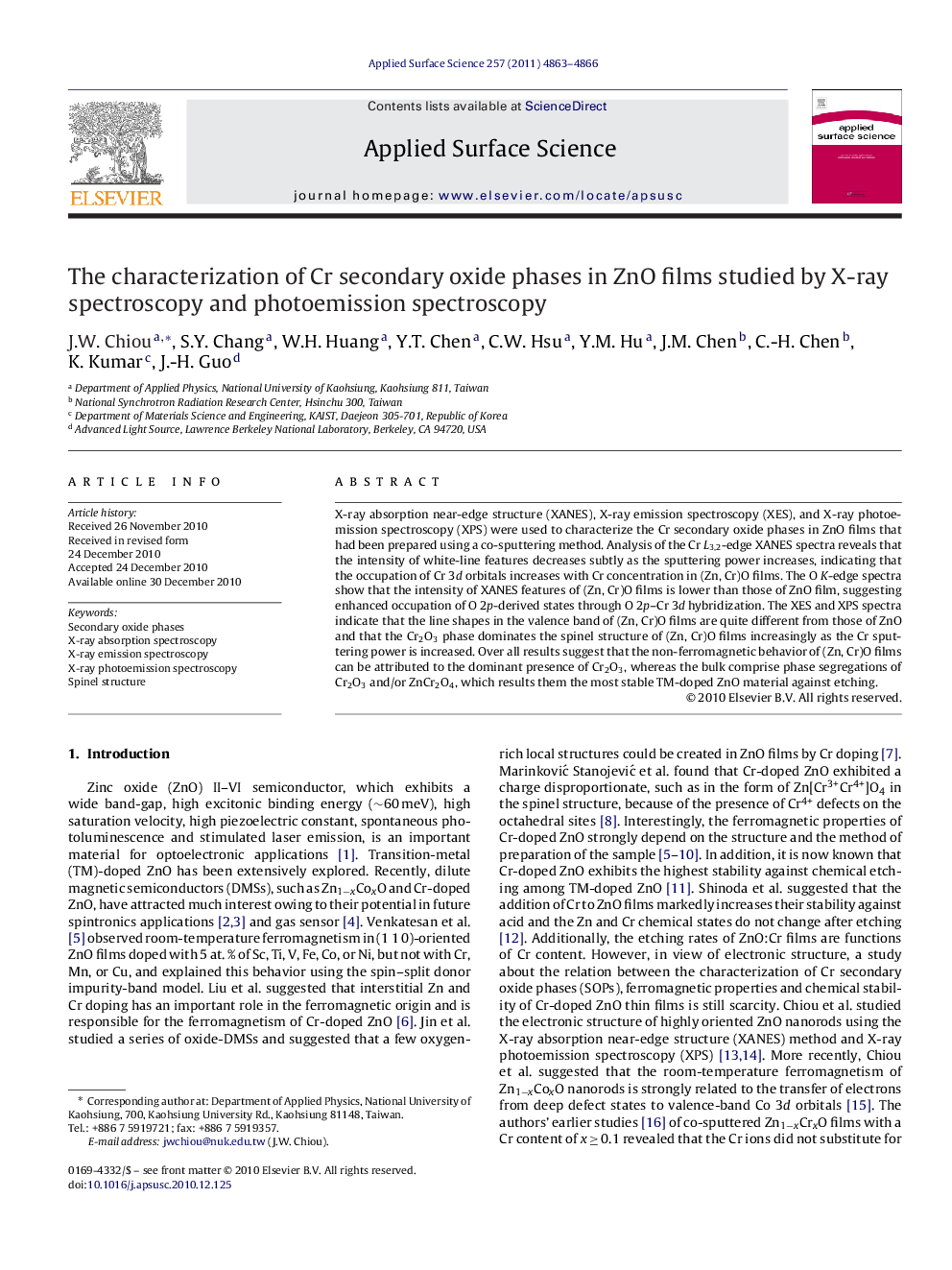| Article ID | Journal | Published Year | Pages | File Type |
|---|---|---|---|---|
| 5367815 | Applied Surface Science | 2011 | 4 Pages |
X-ray absorption near-edge structure (XANES), X-ray emission spectroscopy (XES), and X-ray photoemission spectroscopy (XPS) were used to characterize the Cr secondary oxide phases in ZnO films that had been prepared using a co-sputtering method. Analysis of the Cr L3,2-edge XANES spectra reveals that the intensity of white-line features decreases subtly as the sputtering power increases, indicating that the occupation of Cr 3d orbitals increases with Cr concentration in (Zn, Cr)O films. The O K-edge spectra show that the intensity of XANES features of (Zn, Cr)O films is lower than those of ZnO film, suggesting enhanced occupation of O 2p-derived states through O 2p-Cr 3d hybridization. The XES and XPS spectra indicate that the line shapes in the valence band of (Zn, Cr)O films are quite different from those of ZnO and that the Cr2O3 phase dominates the spinel structure of (Zn, Cr)O films increasingly as the Cr sputtering power is increased. Over all results suggest that the non-ferromagnetic behavior of (Zn, Cr)O films can be attributed to the dominant presence of Cr2O3, whereas the bulk comprise phase segregations of Cr2O3 and/or ZnCr2O4, which results them the most stable TM-doped ZnO material against etching.
Research highlightsⶠO 2p-Cr 3d hybridization increases with Cr concentration. ⶠThe possible formation of the ZnCr2O4 structure is only at high Cr concentrations. ⶠCr is present as Cr3+ in (Zn, Cr)O films. The non-ferromagnetic behavior of (Zn, Cr)O films can be attributed to the dominant presence of SOPs of Cr2O3 in the films. ⶠCr SOPs results them the most stable TM-doped ZnO material against etching.
